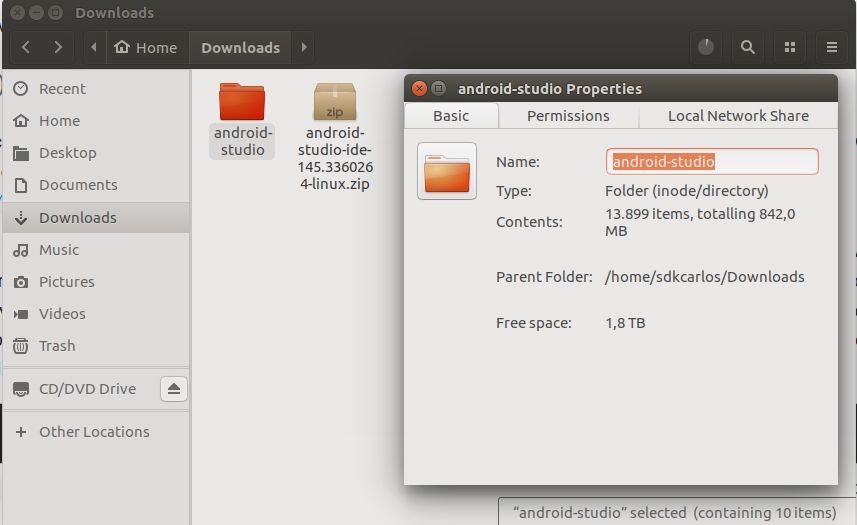

- HOW TO USE ANDROID STUDIO TO CHANGE PERMISSIONS HOW TO
- HOW TO USE ANDROID STUDIO TO CHANGE PERMISSIONS FREE
- HOW TO USE ANDROID STUDIO TO CHANGE PERMISSIONS WINDOWS


If you do not already have the DDMS tab near the Java and Debug tabs, do as follows: In order to view Android internal device files in Eclipse, you will need to open the DDMS perspective: When you done, set back the default permissions for all files that you’ve changed. I am encouraging you to make those changes only for your application package directory. Once you open your file/directory to the “world”, it can be observed or even changed (depends on the permission type) by someone else. The RisksĬhanging file permissions can be very dangerous if you don't know exactly what you are doing.
HOW TO USE ANDROID STUDIO TO CHANGE PERMISSIONS WINDOWS
I will briefly explain about the Linux file permissions and the basic use of adb tool with illustrated examples for Windows users however other operating system users can benefit from this article as well, because the concept is the same.
HOW TO USE ANDROID STUDIO TO CHANGE PERMISSIONS HOW TO
In this example, I'm taking zero arguments, so if you want to send one argument, you can make another template with an abbreviation called susdis1 and so on.In this tutorial, I will explain how to view your Android internal files using Eclipse DDMS perspective. You can copy and paste it and adjust it if you want n arguments in the function. I always use this one in the functions of my repositories. Suspend function with a specific dispatcher Abbreviation: vll Template Text: $VIEW$ Applicable in XML 5. This one creates a vertical LinearLayout for an XML view with a placeholder already written for an ID, and the vertical orientation by default. This I don't use much lately, as I'm trying to use Compose most of the time, but it was one of my favorites. Abbreviation: perms Template Text: Applicable in XML 4. To solve that, I made this template that writes those permissions instead of going to GitHub and navigating to the AndroidManifest of my projects. I usually use the same permissions in my apps, but I used to forget what those were exactly. Abbreviation: logui Template Text: Log.d("UIDEBUG", "$MESSAGE$") Applicable in Kotlin 3. For that, I have this template for quick messages. Sometimes when I want to complement the debugger, or I'm looking for an error that can't be debuggable, I use the Logcat. Abbreviation: ldata Template Text: val $READVAR$: LiveData get() = _$READVAR$ private val _$READVAR$ = MutableLiveData() Applicable in Kotlin 2. This creates a variable that can be read and written inside the ViewModel, and another one that is exposed to the view, and can only be read. When exposing a LiveData variable to the view, I always use this template.
HOW TO USE ANDROID STUDIO TO CHANGE PERMISSIONS FREE
These are specific for what I do in my day to day, so feel free to share yours in the comments. Now that you've seen what a Live Template does and how to create one, I want to share some of the ones that I've created for myself. To set the placeholders, we need to put $ symbols around the text that is variable. This is going to require an abbreviation ( ifn in the last example), an optional description and the template itself.

Here you can make your own templates for a specific language.


 0 kommentar(er)
0 kommentar(er)
